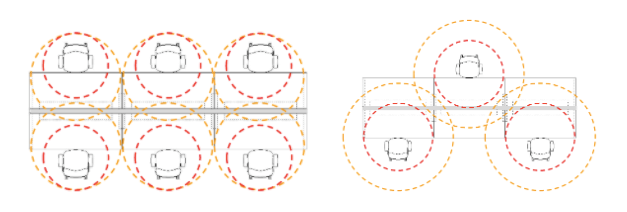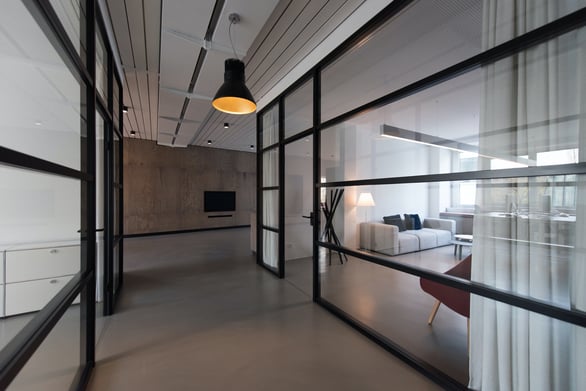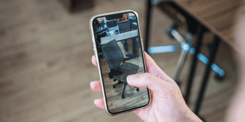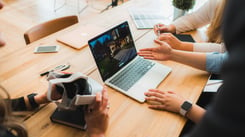While much of the world is still continuing to observe social distancing and working from home, many cities and states have started to release their official plans for reopening businesses and public areas. In Texas, restaurants, stores, and even movie theaters had been given the green light to reopen and operate with certain restrictions. And now the governor is looking to implement the second phase where childcare centers, bars and sporting events can start operating within certain guidelines. Similarly in Ontario, Canada, plans for a 3-stage reopening have been made public, where stage 1 will allow businesses that can open immediately to do so with strict regulations. And while every country and state will handle reintroducing businesses a little differently, they all share one thing in common: reopening businesses slowly and making sure those affected are well informed.
We know that reopening physical offices is one action that is weighing on everyone’s mind. It’s no secret that the physical office need to observe drastic changes in order to make the area as clean and safe for those using the workspace. However, training employees on the new regulations cannot happen when we have all returned to the office - this needs to happen now. Plus, traditional ways of hosting a day of training with everyone in the office can no longer be an option in light of our current circumstances.
Today, we’ll be exploring the value of using Virtual Reality to showcase a post-COVID office and how you can also use this technology as a training tool for employees returning back to the office.
Highlight Key Features
Perhaps your current office space is an open office concept with shared storage areas and places where people can hang their jackets and coats. Unfortunately, this type of office spacing is not the safest option in our current situation. By now, you would have heard of various layouts in response to government restrictions and guidelines, such as the 6-feet office concept. This type of layout refers to spacing each workstation out according to the distance recommended by health organisations and government officials. And while many space planners and businesses love benching systems, the purpose of the layout would not be appropriate given our current circumstances.

While benching systems (on the left) are very efficient, they will need to be de-densified to comply with the 6-feet apart regulation (on the right).
We know that most people aren’t fans of cubicles for how isolating it can feel and how it places an extra barrier for collaboration. However, adding privacy panels, partitions, and even plexiglass to work stations will be able to provide an extra layer of protection that could help reduce the spread of germs. Using VR to showcase your post-COVID office will be able to give you the opportunity to highlight these specific features and explain the purpose of them much more clearly and without any risk of misunderstanding. Whether it be giving them a glimpse into what their new desk system will look like or to spotlight their additional personal storage spaces, reintroducing the new and improved post-COVID office to those who use this space the most in VR will allow them to understand how the office will be after this period of working remotely.
Sequence for Coming In and Out
Aside from some of the more obvious changes that will need to happen, the next step businesses have started to explore is how people will come and go to and from the office. Whether it be employees coming in and starting their day, clients coming in for meetings, or the cleaning staff and their schedules. Depending on the office, the types and amount of foot traffic will differ, but the principle is the same: reducing large groups of people to lessen risk. In order to execute this well, employees must have a clear schedule of when they can enter/leave the office as well as an almost instinctual understanding of the correct path to take.

Coming in and out of the office will need to look a little different than what we are currently used to.
On top of creating a detailed schedule with set times, use VR as a platform to train those who use the space on the correct procedures of entering and leaving the office. Virtual Reality has been a popular tool used for a variety of purposes due to its immersive capabilities that can show size and scale much better. That’s why VR is one of the go-to tools for those in the commercial design industry, like architecture and interior design. Because we will need to continue distancing ourselves from other people even when we can return to the office, it will be important for employees to understand how far apart they will need to space themselves to begin and end their day in a safe manner. VR will allow them to reorient themselves in a space that was once familiar to them and to follow these brand new processes and sequences.
New Regulations for Communal Spaces
I’m sure for many of us, the day when we all are given the OK to head back to the physical office will be a great day. Not only can we get the social interaction we’ve all been missing, but it would be nice to get just a little bit more normalcy back into our weekly routines. Unfortunately, how we interact with each other, especially in communal spaces, will look very different than what you may have envisioned.
.jpeg?width=578&name=austin-distel-_S7-KX8geL0-unsplash%20(1).jpeg)
Communal spaces like these will need to be reconfigured for the post-COVID office.
Conference rooms and general communal areas will either need to be removed or observe massive change in order to reduce spread and ensure everyone’s safety. Similarly to workstations, communal areas will also need to be de-densified in order to comply with leaving enough space to decrease the likelihood of contracting any diseases. And while safety and concern may be at the top of people’s minds, it may still take some time getting used to the post-COVID office. Hosting a “virtual tour” in VR allows you to introduce these brand new changes in a way where employees can begin “practicing” how to navigate this familiar yet unfamiliar space. Plus, VR can transport employees into the office to understand the new expectations and guidelines of how to use the space by seeing it for themselves. Not only would it paint a more accurate picture of the new “physical office normal”, but it could also help make the transition much easier since they have already seen and experienced the new layout before.
Showcase the Post-COVID Office Anytime, Anywhere
As you can tell, these changes that will make the post-COVID office are actually quite significant and will be disruptive. However, it must be significant and disruptive in order to keep everyone in the space as clean and safe as possible. The beauty of introducing the post-COVID office with VR is that you can start this training today. Because VR can be a mobile online platform, you wouldn’t need to wait until everyone has returned to the office to introduce the brand new layouts and processes. In fact, you can start preparing employees today while everyone is still quarantined and working from home. Plus, with our Yulio platform, anyone can view VR experiences with any device -- you don’t need a VR headset. So train and prepare your employees for the new normal by showing them the post-COVID office with the power of Virtual Reality.
If you’re interested in trying out our Yulio VR platform, you can click here to sign up for our free 30-day trail. Get access to tools that can enhance your projects as well as our most popular feature, Collaborate, which allows you to present and collaborate with anyone, anywhere. If you would like to chat with someone to get a quick rundown of our platform, click here to schedule a time to chat and someone from our team will be in touch with you.






.jpg?width=245&height=150&name=iStock_88161583_XLARGE%20(1).jpg)
